Eagle Guide
by Martin Willey
Text and console art by Marcus Lindroos
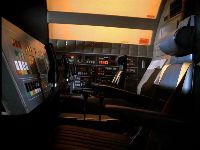
This view shows the console and the flight levers in front. All four levers are right-hand ones, with a small base plate on the right side for to support the hand.
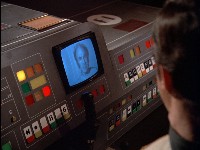
The console as it appeared in Matter of Life and Death.
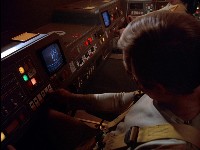
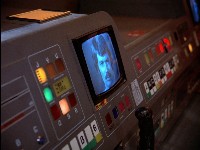
The front console in Guardian Of Piri. The illuminated colour squares now have labels (or at least letters and symbols).
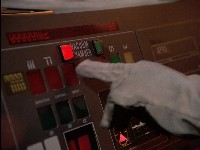
Closeup view of the top left corner of the Eagle pilot flight console (Earthbound). Alan Carter pushes the "Input" and "Mark" buttons to activate the "vacuum chamber" airlock. The small instrument below looks very much like a modern aircraft multifunction display. The twin "Vacuum Chamber" buttons and most of the labels do not appear in the first four episodes.
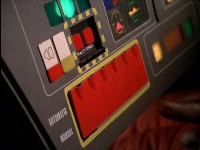
The bottom left corner of the Eagle pilot flight console. The twin red buttons perform different payload related functions. Seen here is the Ring Around The Moon configuration, where the left button sets the gravity shield to 50% power. The one on the right gives full gravity shield power (in Black Sun it fires the laser instead).
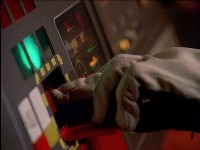
A row of six buttons are normally hidden behind plastic key guards.These also appear to be payload-dependent. In this scene from Black Sun Ryan fires a laser beam. In Ring Around The Moon and War Games the two red buttons turn on and off the autopilot instead.
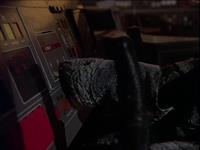
The centre section has a small hardcopy printer unit (it is used in Matter of Life And Death and Space Warp only). There are also three buttons labeled A,B,C. In this scene Maya pushes the middle "B" button to retract the launch pad boarding tube (Space Warp)
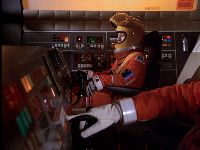
In Breakaway, the cargo Eagle centre panel has a second instrument display instead.
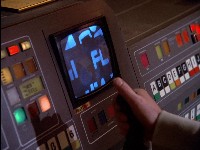
The other half of the Eagle commander's flight console is dominated by a 10" cathode ray tube. The square keypad at left has eight illuminated touch sensitive keys, plus three small buttons on top which do not appear in the early episodes. In Death's Other Dominion and The A B Chrysalis, the yellow button at top right turns on the external camera. The labels read "Demodulators" and, below, "Quadruplers" (both terms are used in electronics for signal processing).
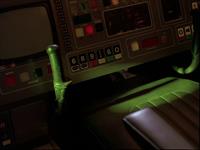
The copilot flight console is seen less frequently. This is the bottom half (All That Glisters).
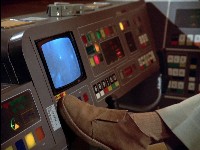
A rare good view of the copilot flight console from Guardian of Piri. It seems the two colour multifunction displays show velocity, estimated arrival time and distance information, among other parameters (Catacombs of the Moon, The Seance Spectre, Brian The Brain). In most episodes the copilot acts as a systems manager, monitoring the instruments while the commander pilots the Eagle.
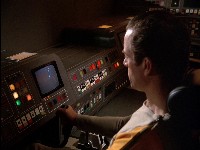
The buttons between the copilot and pilot are rarely used. The two red buttons above the "K","M" were added in Ring Around The Moon. These buttons switch off the main power/propulsion system in War Games as well.
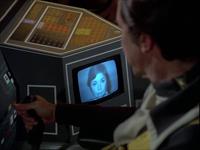
In year 2, most of the centre console buttons were covered by a central extension equipped with an additional two ten-inch CRT displays.
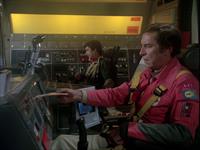
Printing out hard-copy in Space Warp
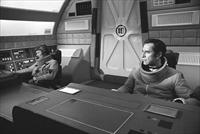
The back of the flight console was closed off occasionally, although some publicity shots reveal the wooden frame and wiring.
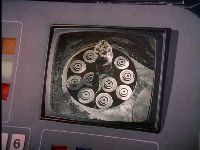
The CRT screen frequently displays video from external cameras. It is almost always black and white, except in Breakaway. In the first episodes, the black frame and screen are set directly into the console, but from Earthbound onwards there a thin grey plate surrounding it, with a red and yellow striped label bottom left.
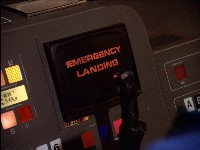
The CRT also shows systems messages ("EMERGENCY LANDING", "ABORT", "RED ALERT" etc.). Here, in Death's Other Dominion, it is "colour" (a red transparent sheet place over the black and white screen).
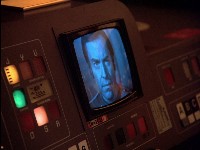
The flight console screen is frequently used as a video telephone. The leftmost button below the CRT starts the video call in The Full Circle and Guardian of Piri (the red button at far right is used for the same purpose in Seed of Destruction).
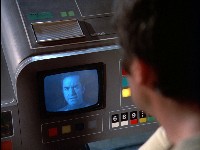
The four buttons below the pilot cathode ray tube probably perform the same function (in Mission of the Darians Carter pushes the leftmost button to contact Main Mission).
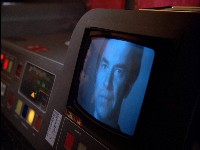
Another view of the Eagle pilot console screens. The buttons at far left turn on and off various primary as well as backup systems to conserve power (War Games, The Last Sunset).
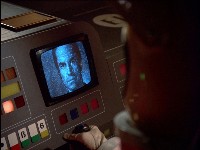
In early year 1 episodes, most of the buttons have no labels. The yellow "6" and adjacent unlabelled green buttons start and end video calls in Ring Around the Moon and Matter of Life and Death, respectively.
Copyright Martin Willey